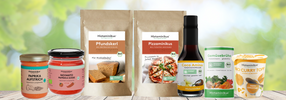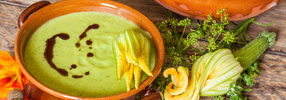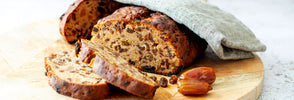
Fructose intolerance
Unfortunately, histamine intolerance rarely comes alone-Often ill people also suffer from other intolerances (multi-intolerances). So some also have a problem with the simple sugar fructose. This is called fructose intolerance - for short "fi". The symptoms are also known as "fructose emice absorption". About 15-20% of the population suffers from fructose intolerance. This makes the fructose intolerance in second place in the most common food intolerances. Place 1 takes on lactose intolerance. By the way, the histamine intolerance is in 4th place.
Since histamine intolerance often goes hand in hand with a dysbiosis in the intestine and the small intestine mucosa is affected, in addition to reducing the histamine-degrading enzymes, a reduction in lactose and fructose-degrading enzymes in the small intestine mucosa. This is one reason why you often suffer from multi-intolerances when you have histamine intolerance.
What is fructose intolerance or malabsorption?
Fructose, also called fructose, is a Simple sugar (Monosaccharide) and is one of the carbohydrates. This also includes glucose (glucose). In a healthy small intestine mucosa, the consumed fructose is transported into the blood via the embers-5 transporter proteins on the intestinal side. These promote the fructose from the intestine to the cells of the small intestine mucosa in order to be broken down by certain enzymes and released into the blood.
In terms of fructose intolerance, on the other hand, the glut-5 transporter proteins work insufficiently. As a result, too much fructose remains in the small intestine, which cannot be broken down there and continues to move into the large intestine. The colon and its local bacteria then ferment the fructose, which creates hydrogen, methane and carbon dioxide gases. This leads to the typical, sometimes foul -smelling flatulence.
Since fructose also has a water -binding property, the dining porridge in the large intestine is not as much water as usual, so that diarrhea arises.
Types of fructose intolerance
1. Inherit (herditarian) = HFI
In the case of inherited fructose intolerance, the metabolic disorder has been put into the cradle by an ancestor. As a rule, the defective glut-5 transporter protein is the problem. Unfortunately, this form is not curable, but the symptoms can be severely relieved by an adapted diet.
2.
People with a acquired fructose grade absorption have no enzyme defect, but a much lower tolerance limit of the fructose than others have a much lower tolerance limit. In most cases, this low tolerance arises from a dysbiosis in the intestine. As a result, the cells of the intestinal mucosa are damaged and there are problems with the formation of the mining enzymes. Therefore, this is not a metabolic disorder, but a absorption disorder. The body is not capable of taking the fructose into the bloodstream via the small intestine mucosa. The acquired fructose paralvality can originate in a wide variety of factors. It is often difficult to find out where it is. Only when you know your cause can you pack the problem at the root and combat the symptoms more effectively. With consistent treatment, larger amounts of fructose can be tolerated over time.
Possible causes
- Mushroom infections that weaken the intestinal mucosa, e.g. Candida Albicans
- Past or current intake of antibiotics, which also weakens the intestinal mucosa
- Small intestinal misalignment
- long -lasting stress
- unfavorable nutrition
- Medicines that influence the digestive tract as a side effect
Symptoms of fructose intolerance
Immediate symptoms After eating fructose -containing:
- Abdominal pain and cramps
- Flatulence
- Nausea & vomiting
- Diarrhea
Secondary symptoms:
-> Coming over a long period of time as follow -up symptoms
-> See more under "Follow"
- Headache
- Brain Fog
- dizziness
- Skin problems such as acne or redness
- low feeling of satiety
- Fatigue & exhaustion
- Weather sensitivity
- Fears & depression
- more frequent infections
- Micronutrient deficiency
Which foods contain a lot of fructose and should be avoided?
- Fruit and products in which fruit were processed
-> have a lot of fructose: apples, pears, cherries, grapes, dried fruit
-> jam, smoothies, shakes and fruit juices, fruit cake ... - Sweet
-> Agavendick juice, corn syrup, sweets, honey - Light and diabetic productswho were sweetened without industrial sugar, but with fructose
-> In Light products, Sorbit is also often used, which is very similar to the chemical structure of fructose and is also often tolerated badly - Products with household sugar
-> Household sugar / industrial sugar contains up to 50% fructose, sweets - Inulin and Oligo fructose
-> e.g. artichokes or chicorée - Certain types of vegetablesthat contain less fructose than fruit, but still quite a lot
-> pea, mushrooms, chicorée, red cabbage, white cabbage, leek, peppers, lentils, onions, garlic - Attention: also in Finished products Like ketchup or sauces, sugar is often buried and should be avoided or checked in individual cases via the listed ingredients.
You can under alles-essen.de/fructosin_zuckergehaltstabelle.pdf download.
Tip: Even if you have no fructose intolerance, you shouldn't eat too much fructose. It is just as bad to do without it artificially, but too large quantities can make other sick people in the long term.
"Studies have confirmed that increased fructose intake has an unfavorable effect on the metabolism and that the development of obesity and obesity as well as fat metabolism disorders and diabetes type 2 favor. In addition, the increased supply of fructose increases the risk of high blood pressure and gout."
Quote from the NDR (https://www.ndr.de/ratberger/gesundheit/zu--viel-fruchtzucker-ist-ungesund ,Fruchzucker106.html)
How can I have the fructose intolerance tested?
Fortunately, the fructose intolerance is easy to test. To do this, you do an H2 breath test, in which you drink a sweet fructose solution on an empty stomach and then blow in a tube at regular intervals. The breath samples are then examined in the laboratory on the hydrogen content and compared with the initial value before drinking. The colon bacteria are responsible for the formation of the hydrogen during the metabolism of the fructose. One part is absorbed by the intestinal mucosa, then gets into the lungs and is then exhaled. The other part escapes in the form of flatulence and flatulence.
Based on the values and the symptoms experienced during the test, it can usually be identified quite quickly whether the symptoms are due to the FI or not. With values of less than 10ppm, you usually don't have to worry and you can turn to fructose normally. With values over 10ppm, a fructose emice absorption is becoming increasingly more likely. What is important in the test, e.g. the nutrition should look a few days before the test, your doctor will tell you or it is at home for self -tests in the instructions for use.
Apart from this, a nutritional diary or an exhaust diet can also make sense to determine whether something changes / improves if you temporarily avoid fructose
Consequences of fructose intolerance
1. Low feeling of satiety
The NDR actually put it very aptly: "Fructose also leads to a lower feeling of satiety. Usually the hormone leptin is responsible for conveying the brain whether the fat deposits are sufficiently filled. Leptin is formed in the fat cells. If there is sufficient fat reserves, however, leptin inhibits an excessive fructose consumption to one Leptin resistance.
(https://www.ndr.de/ratgeber/Gesundheit/zu-ti-fruchtzucker-ist-ungesund ,Fruchzucker106.html)
2. Lack of micronutrients
The dysbiosis in the intestine can already increase existing defects, since the nutrients from food are not correctly absorbed. A lack of zinc or folate is also typical. This should urgently be discussed with the family doctor and treated if necessary, since these defects can trigger hair loss, difficulties of concentration and even depression.
3. Development of multi-intolerances
Many food intolerances can have their cause in a disturbed intestinal flora, also called dysbiosis (imbalance). If the intestinal flora was exposed to too much fructose for too long, but which the body could not properly dismantle, the intestinal mucosa contains a lot and damage can occur. These damage can also be shown in the form of further intolerances. Because the intestinal mucosa also has cells that are important, for example, to break down lactose and histamine because those cells produce the respective mining cymes lactase and diaminoxidase. If the cells of the mucous membrane are damaged, it is not unlikely that further intolerances will occur with the time exposing, such as intolerance to sorbit, histamine, gluten, lactose or salicylate.
4. Weaked immune system
Much of our immune system is in the intestine. With a weakened intestinal flora, the immune system also suffers from fructose intolerance and ensures increased susceptibility to infection.
Measures
1. Lead symptom diary
You mean you could have fructose intolerance? Then lead a symptom diary in which you write down after your meals how you were doing with the food consumed. Most of the time you can see which foods seem to cause problems. If you then research whether this is by chance all food with a medium to high fructose content, it could be that your body cannot change fructose properly.
2. Diet change / maternity leave phase
In the parental phase, you first leave out all the food that does not do you well and initially contain too much fructose. The food consumed should currently not contain more than 2 grams of fructose per day. For a better idea: 2 grams of fructose are either in 30g apple or 1.5kg potatoes. This gives your body the chance to relieve and calm the digestive tract. Most of them are immediately relieved of the symptoms after a week or two.
Fructose arms (and also histamine arms) "Safe Foods":
- potatoes
- millet
- Quinoa
- rice
- zucchini
- Navigator
- Green leaf salads
- Beef meat
- Noodles (e.g. from spelled or gluten -free from rice flour)
It is important that you deactivate your intestine. A diet in which too much isolated carbohydrates or too many animal proteins were included, it is possible that chronic acidification in the digestive tract has occurred. This also favors a intestinal dysis.
3. Test phase
In the test phase, you start to slowly integrate more fructose into your diet again. You first start with new foods that have only a little more fructose than usual and then continue to increase the salary. In the best case, write down every time after consumption whether and how you reacted. In the beginning, you can also try to use enzyme tablets that support your body a little in reducing the fructose. Well -known preparations for this would be, for example, fructosine or fructaid.
4. Compensate for nutrient deficits
Let your family doctor test which nutrients you are missing. After that, your doctor or therapist can determine which preparations could be compatible and which micronutrients you should substitute.

Histaminikus
The bacteria sensitive
4.65 / 5.0
(139) 139 total reviews
Share

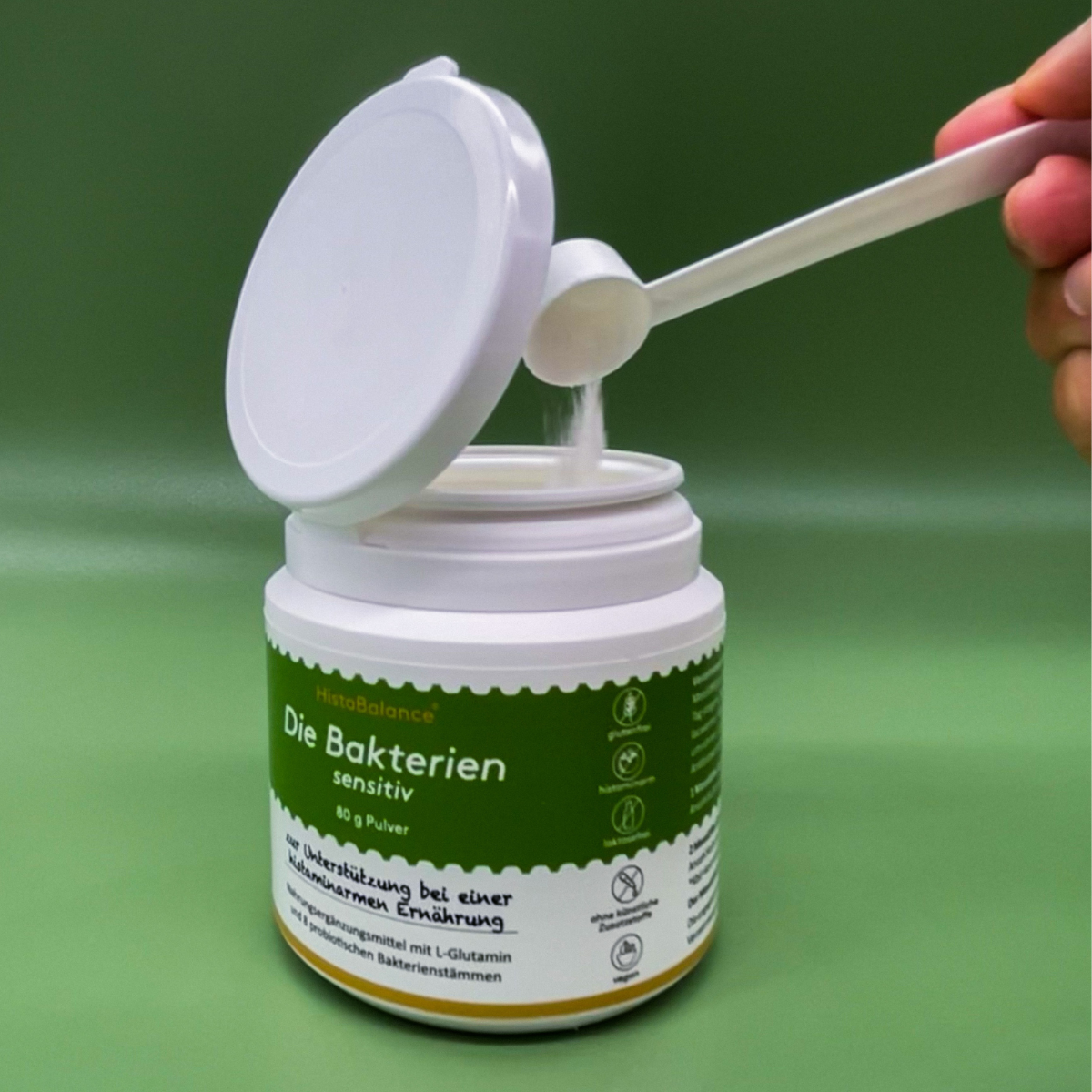
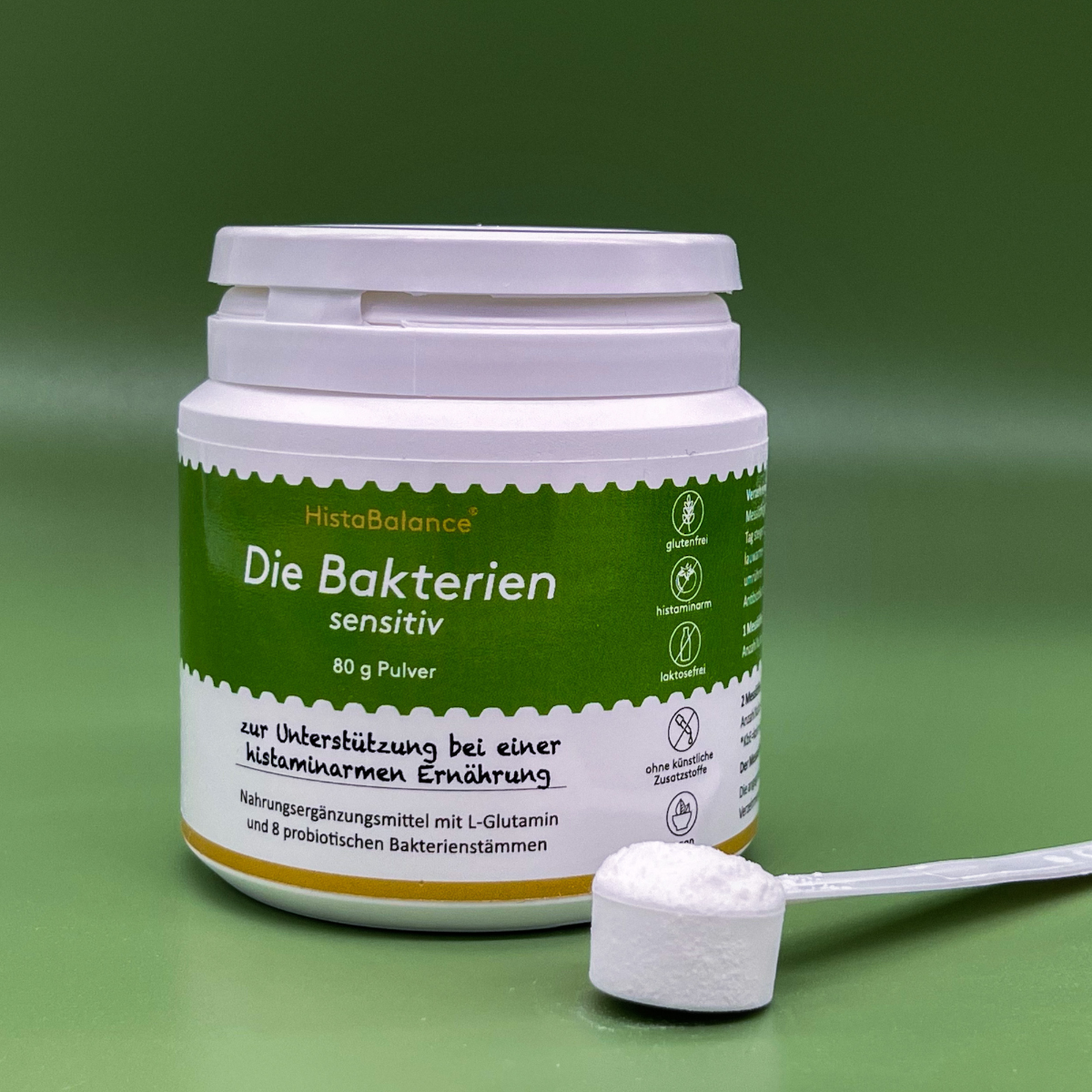
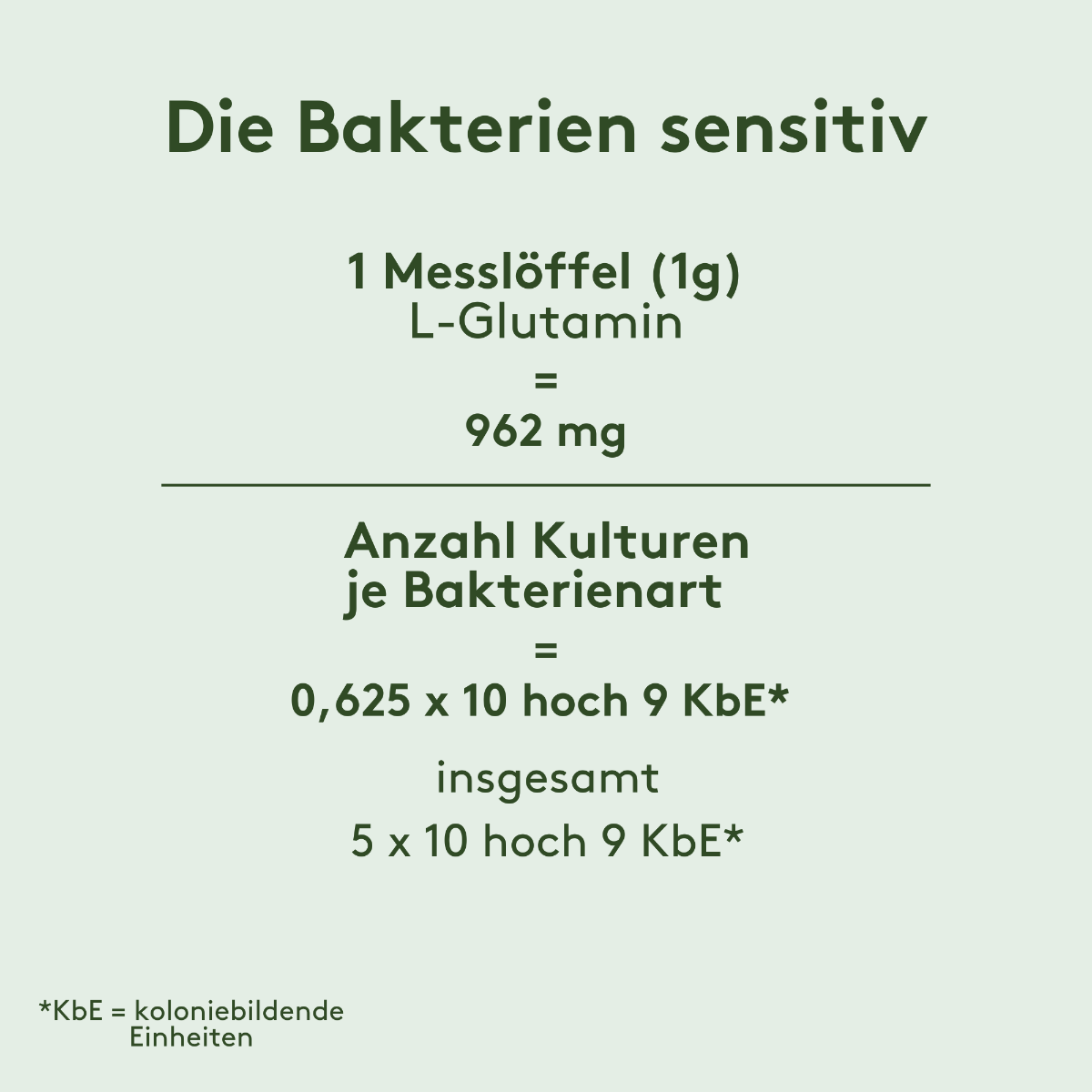
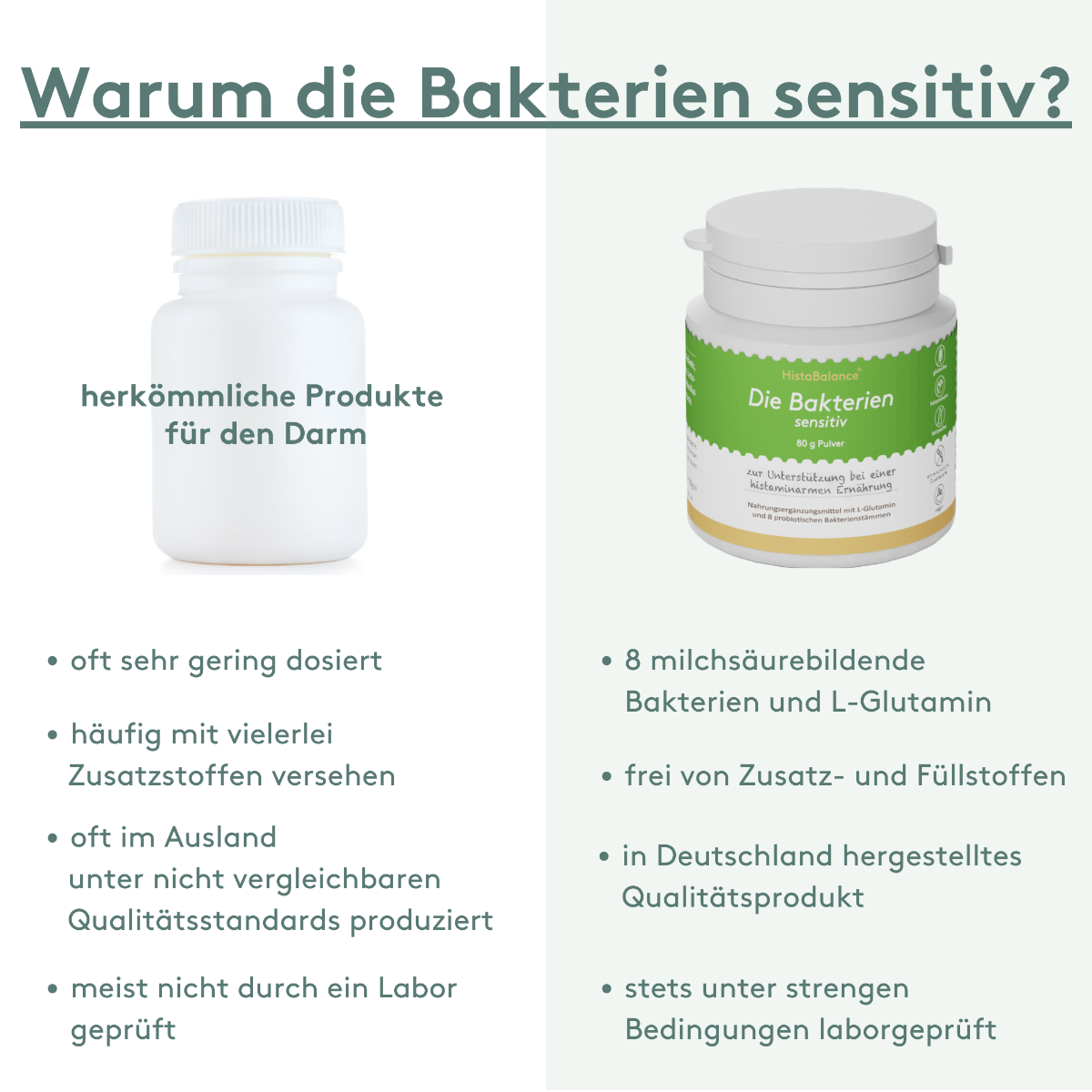
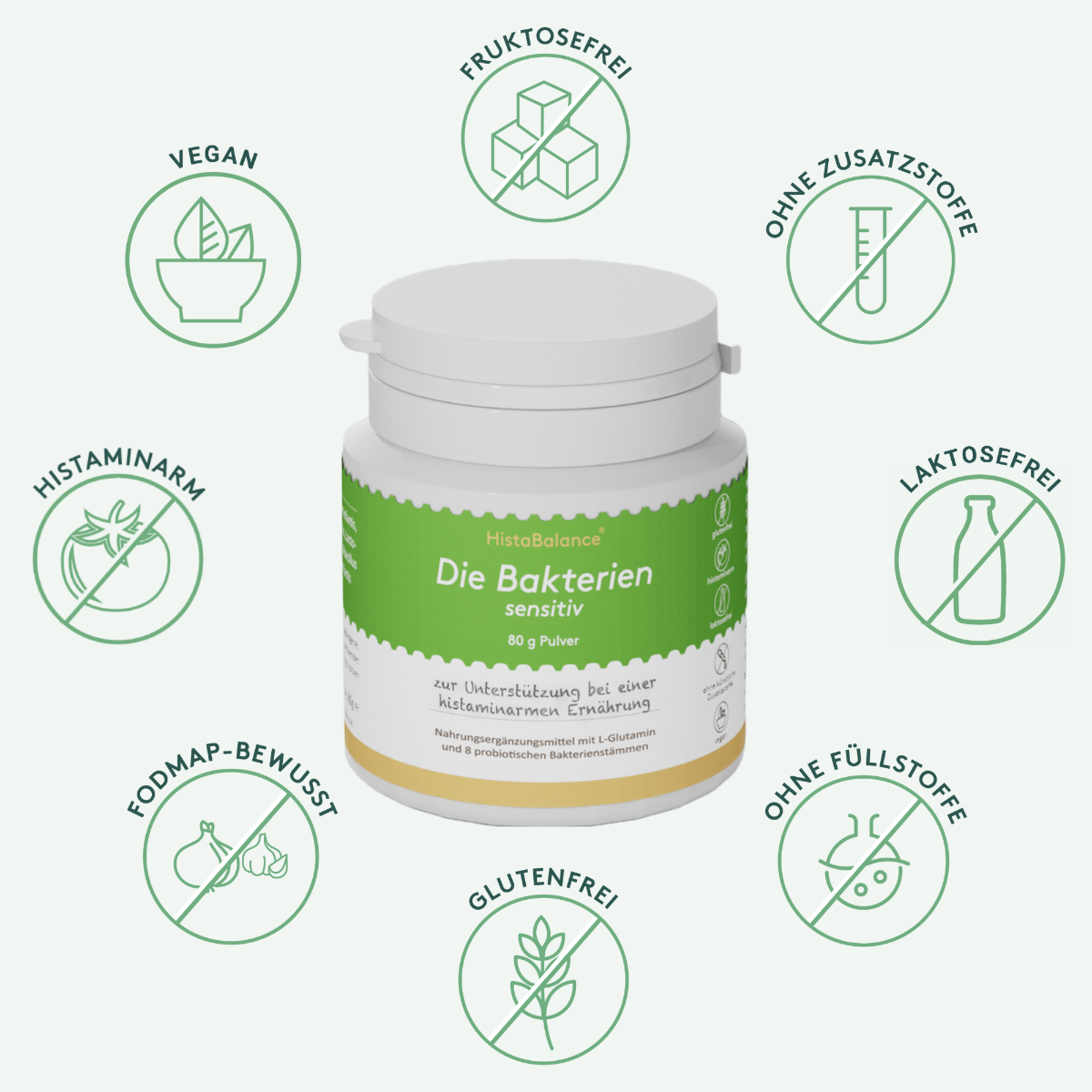
More tips on the way to recovery
These tips should best be integrated from thecare phase to effectively prepare for the test phase:
- Colonation and healing of the intestinal mucosa
The goal of intestinal renovation is to reconstruction your intestinal flora, i.e. removing a possible intestinal dysbiosis. So the goal is to bring the intestinal bacteria back into a good balance.
Gerstengrass, for example, is said to have a cell regenerative, anti -inflammatory and antioxidative effect. You can buy barley grass powder on the Internet and could mix with water and powder shakes.
Probiotics can also help. However, it is important to use a probiotics that was specially developed for fructose and histamine intolerants, otherwise the intestinal flora can be influenced negatively. (Advertising the bacteria sensitive)
- Do not eat fruits on an empty stomach
Glucose increases the tolerance of fructose because it promotes the absorption into the bloodstream. In almost every meal there are foods that are glucose or convert into glucose in the body. Try whether you can tolerate certain types of fruit.
- Fiber only in moderation
Fillers actually have a good effect for the intestinal flora, but they can further disturb the digestive tract, as they are known for gas formation.
- Tea as little helper
Of course, you can also help yourself in the form of teas or personally tolerable (bitter) drops that support the digestion or relieve flatulence. Maybe our Histaminikus bitter herbs bio tea would be something for you?
Collapsible content
Sources
- https://www.edeka.de/Fruktosefreie-lebensmittel-im-sortiment.jsp
- https://www.ndr.de/ratgeber/gesundheit/Zu-viel-Fruchtzucker-ist-ungesund,fruchtzucker106.html
- https://pubmed.ncbi.nlm.nih.gov/36052111/
We have to point out that all information relates to traditional knowledge, studies and opinions and experiences of therapists and literature. Our contribution cannot replace medical healing treatment with the diagnosis and therapy of a doctor. We cannot give a healing promise either. It is primarily about passing on information. In the event of serious illnesses, non -explanatory symptoms and uncertainty, you should see a doctor. The treatment methods mentioned are used for your own dangers!
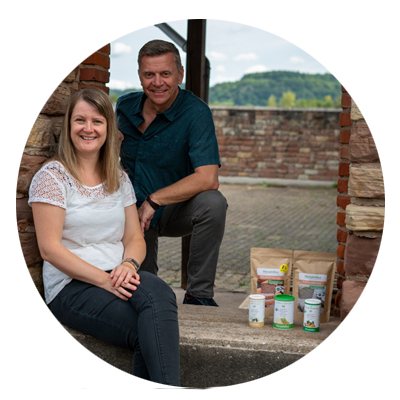
From those affected for those affected
We are Thomas and Michaela Zinser, founder of Histaminikus.
Because of the own histamine intolerance of Michaela and our son, we founded Histaminikus. The frustration does not find any suitable histamine food has spurred us to develop low -histamine food.
We would like to give you back a piece of quality of life. Feel free to look around with us.
Kind regards
Thomas and Michaela

